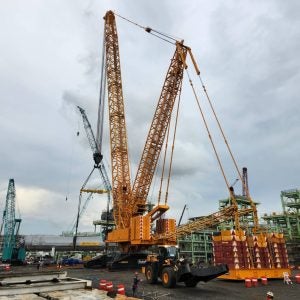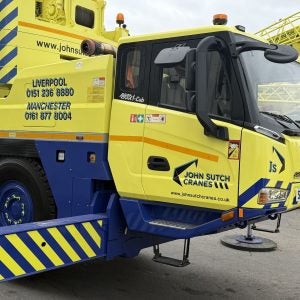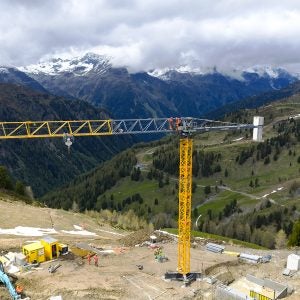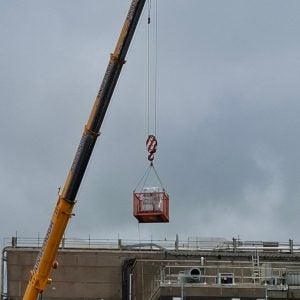SMIE, one of three French companies specialising in anti-collision systems for tower cranes, has signed a supply deal with Liebherr. It has also patented a new elevating cab.
Liebherr spent six months last year testing SMIE’s AC 30 system before finally agreeing in January to abandon its own anti-collision system (first introduced at Bauma 1992) in favour of SMIE’s technology.
Liebherr’s anti-collision system was limited in that it could be used only on Liebherr cranes. It was not compatible with other systems and could not stop other manufacturers’ cranes colliding with Liebherrs. As few construction sites operate only Liebherr cranes, its usefulness was restricted. By instead supplying SMIE equipment, where anti- collision systems are specified, Liebherr cranes can ‘talk to’ other cranes on site which can also be fitted (or retrofitted) with SMIE systems.
Last year Ascorel, a rival of SMIE, signed an exclusive deal to supply Potain. SMIE took the view that it was commercially preferable to be free to supply all manufacturers than to be tied to one, specifically to avoid the problem which Liebherr found itself with.
SMIE believes that anti-collision software will becoming play an increasingly important role in the tower crane industry as regulations are introduced. Hong Kong already stipulates that cranes should be fitted with anti-collision technology. Other countries are expected to follow its lead.
SMIE has also patented its own elevating operator’s cab concept, which it calls the Helicab. The Helicab is offered as an alternative to the Swedish Procab system that it has represented and trialled in France.
The French company has yet to develop a prototype Helicab, but the designs show that the cabin is connected to the mast and follows the motion of the slew ring electronically. It can be operated by cable or rack and pinion.






